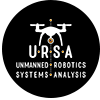IT ISN’T ALL ABOUT PHOTOGRAPHY
There is a lot of uncertainty in the US UAV market due to lack of data. We do not have accurate sales data, number of hours flown, number of incidents, or even a good definition of what a UAV incident is. However, there is one really good UAV related dataset: Authorizations Granted Via Section 333 Exemptions. This is the FAA’s list of exemptions granted to allow commercial UAV operations.
Let’s ask some simple questions of the data, leaving the best for last. (If you don’t want to read the whole thing, please do pay attention to the last question.)
- How many petitions/exemptions by state?
- What was elapsed time between filing of petition and granting of exemption?
- How many petitions were there for each industry/purpose?
Before going forward please understand this – this post is not in any way a comment on the legality or appropriateness of the 333 process and it does not in any way imply that commercial operations without a 333 are in some way illegal or “worse” than operations with a 333 exemption.
Number of 333 exemptions granted per state:
It is worth noting that several exemptions came in from outside the US, most notably Canada, but also one from the UK and one from Switzerland. The top ten states by number of petitioners are:
| State | Exemptions/State | Petitioners/State |
| CA | 65 | 51 |
| FL | 53 | 45 |
| TX | 47 | 45 |
| IL | 20 | 19 |
| AZ | 17 | 17 |
| OH | 16 | 15 |
| PA | 16 | 15 |
| CO | 17 | 14 |
| WA | 14 | 14 |
| NC | 13 | 13 |
Note: Several petitioners filed multiple petitions.
California, Florida, and Texas clearly lead the pack in terms of companies authorized by the FAA to conduct commercial UAV operations. New Hampshire and DC both have zero authorized companies.
The full chart is at the bottom of this post.
Time between filing and exemption granted:
This is an easy one. We know the FAA has picked up the pace and the data clearly supports this:
*June 2014 Includes 2 exemptions which skew the average high: Yamaha at 322 days, Amazon at 270. **April submissions only include those for which exemptions were granted on or before June 8, 2015.
Not only are we seeing more exemptions get filed, we’re seeing the exemptions in the queue get processed faster. Clearly a good thing for those who want to go the 333 route.
It is not all about photography:
All too often we hear that “UAVs are only used for photography,” usually referring to media, real estate, and filmmaking. The data shows that petitioners are interested in using UAVs for many other purposes.
A note on the analysis – there is no single source of UAV use cases. Petitioners were relatively consistent, but some interpretation was required:
- “Filmmaking” includes not only motion picture industry movie-making, but also private event filming, newsgathering, business/tourism, etc.
- “Real Estate Photography” is frequently described formulaically as “academic community awareness” (so people know where to find Main Street, actually, not “academic” in the sense of teaching).
- “Precision Agriculture” almost invariably is accompanied by “Survey/Mapping/GPS” use as well.
- “Industrial Safety (Inspections)” was inclined towards both specific inspection objectives, such as bridges and flare stacks, and industrial activities which require industrial safety, such as mining, construction, civil engineering projects, public utilities & their infrastructure, and so forth.
- “Insurance” was very specifically tied to claims analysis and risk management, and insurance companies were usually the petitioners though there was at least one third party.
Not only are there many other intended purposes other than photography, industrial inspections and surveying both exceed filmmaking and real estate exemptions granted. Let me say that again, the FAA 333 exemption data shows that more commercial operations are interested in inspection work that real estate photography work.
The data also suggests something else – there are a lot of people quietly flying fixed wing UAVs. The public, media, and government often associates “drones” with multi-rotors. A lot of precision agriculture, mapping and SAR applications require fixed wing platforms for long duration, wide area operations.
Summary:
There is more interesting data to mine from the 333 exemption data set (drop me a line if you have questions that it might answer). Hopefully what we present here will serve two purposes:
- Put some public and media misconceptions to rest.
- Show that we need more good data on UAV applications, incidents, and regulation in the US as well as globally
The second point is very important to me – it is hard to make good decisions about regulation, law, investment, operations, etc., without good data to help inform the decision making process.
-David Kovar
Availability of data:
Our raw data extracted from the 333 data set is available to academic institutions and media organizations at no cost providing that appropriate attribution is included in any resulting analysis or reporting.
Petitioners and Exemptions per State
The following graphic was too large to include above.




